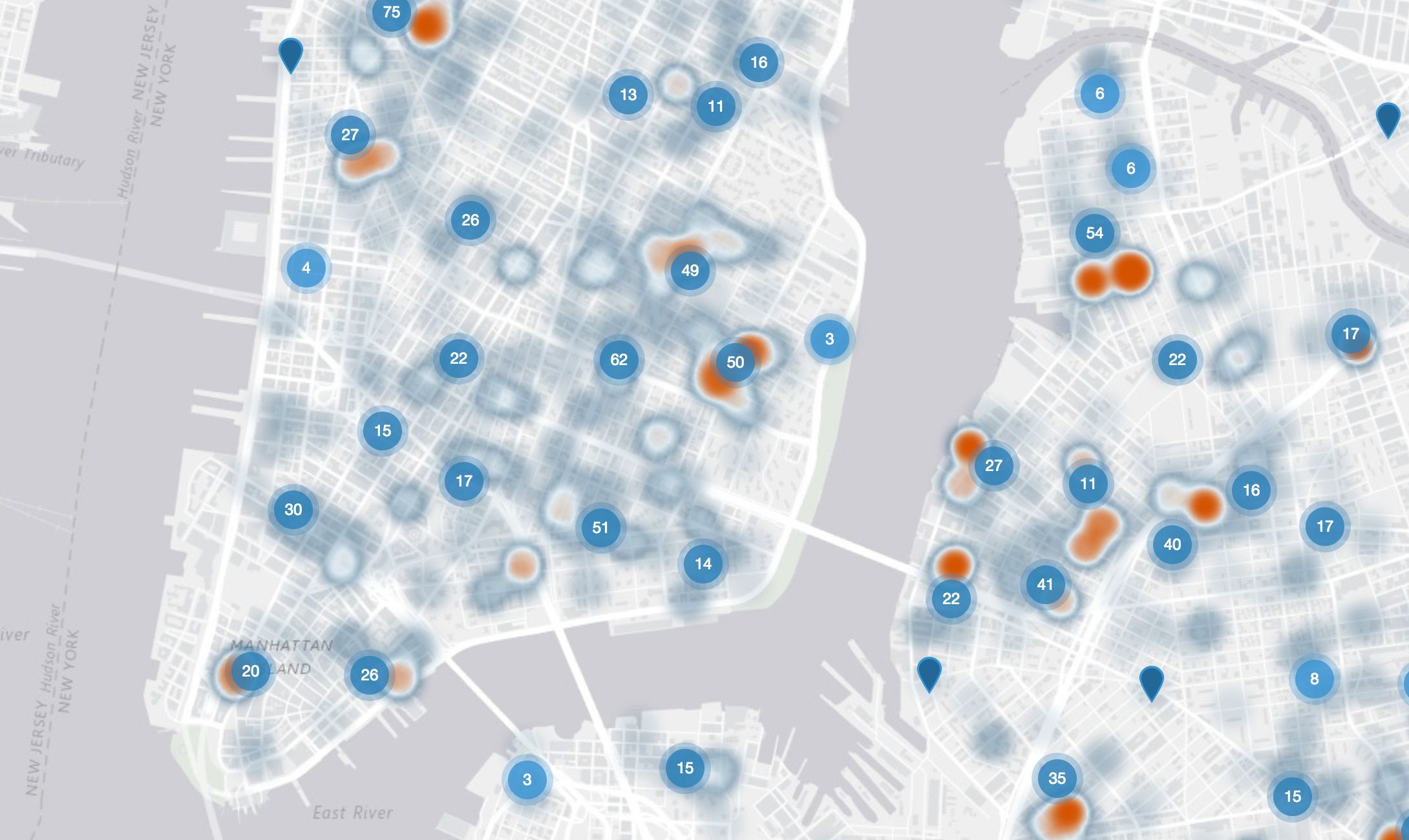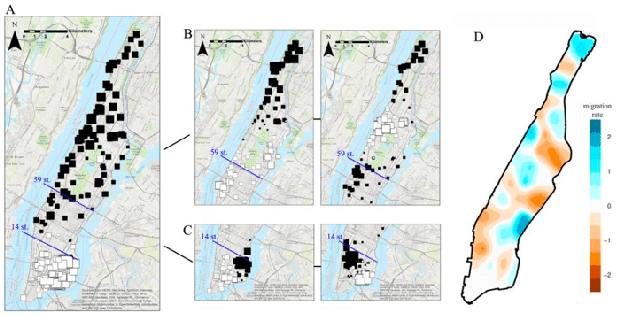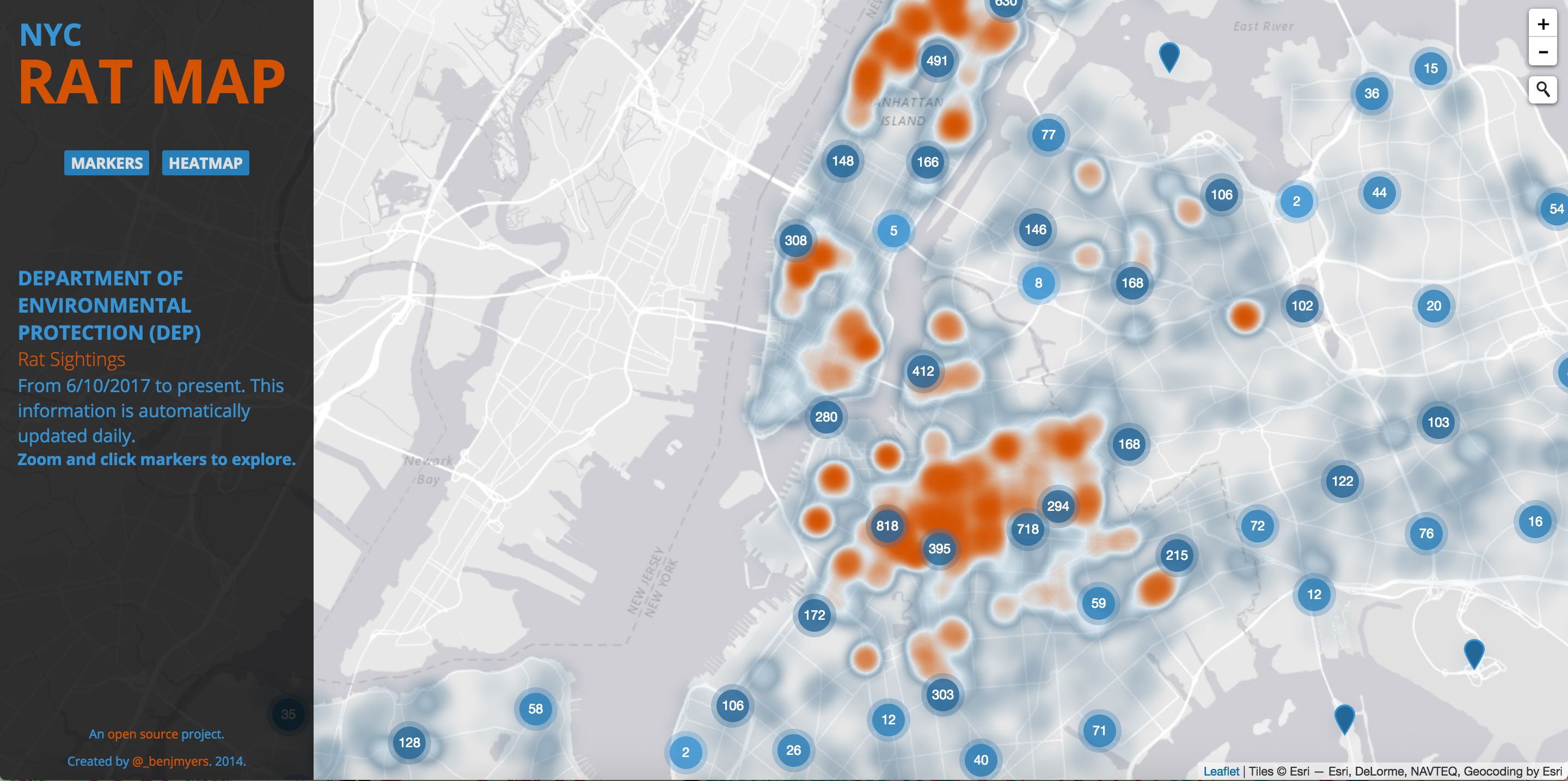Mapping Manhattan's Rat Population [Uptown vs. Downtown Rodents Genetically Different!]

Rats of the North and South
It's true, Uptown Rats are Genetically Different than Downtown Rats. A recent study revealed that there are specific sub-populations of rodent on the island of Manhattan in New York City. Interestingly, these two groups are separated by Midtown Manhattan which is largely zoned for commercial use and (as of the last several decades) lacked a large housing population. Housing = garbage = rat resources. So populations to the North and South have effectively been walled off from one another as a result! Take a look at this fascinating study...
“If you gave us a rat, we could tell whether it came from the West Village or the East Village. They’re actually unique little rat neighbors.” - Matthew Combs

Curious to learn more about these mysterious Rodent communities? Here's an excerpt from the study "Spatial population genomics of the brown rat (Rattus norvegicus) in New York City" (link here).
We examined spatial patterns of neutral genome-wide variation in brown rats (Rattus norvegicus) across Manhattan, New York City (NYC) using 262 samples and 61,401 SNPs to understand: 1) relatedness among nearby individuals and the extent of spatial genetic structure in a discrete urban landscape; 2) the geographic origin of NYC rats, using a large, previously-published dataset of global rat genotypes; and 3) heterogeneity in gene flow across the city, particularly deviations from isolation-by-distance. We found that rats separated by ≤200m exhibit strong spatial autocorrelation (r = 0.3, p = 0.001) and the effects of localized genetic drift extend to a range of 1400m. Across Manhattan, rats exhibited a homogeneous population origin from rats that likely invaded from Great Britain. While traditional approaches identified a single evolutionary cluster with clinal structure across Manhattan, recently-developed methods (e.g., fineSTRUCTURE, sPCA, EEMS) provided evidence of reduced dispersal across the island's less residential Midtown region resulting in fine-scale genetic structuring (FST = 0.01) and two evolutionary clusters (Uptown and Downtown Manhattan). Thus, while some urban populations of human commensals may appear to be continuously distributed, landscape heterogeneity within cities can drive differences in habitat quality and dispersal, with implications for the spatial distribution of genomic variation, population management, and the study of widely distributed pests. - Original Report
